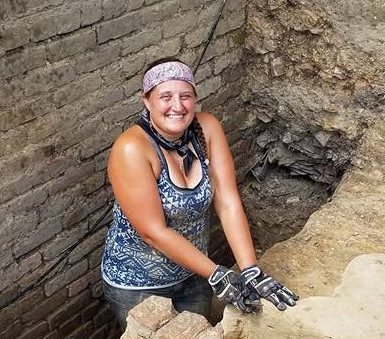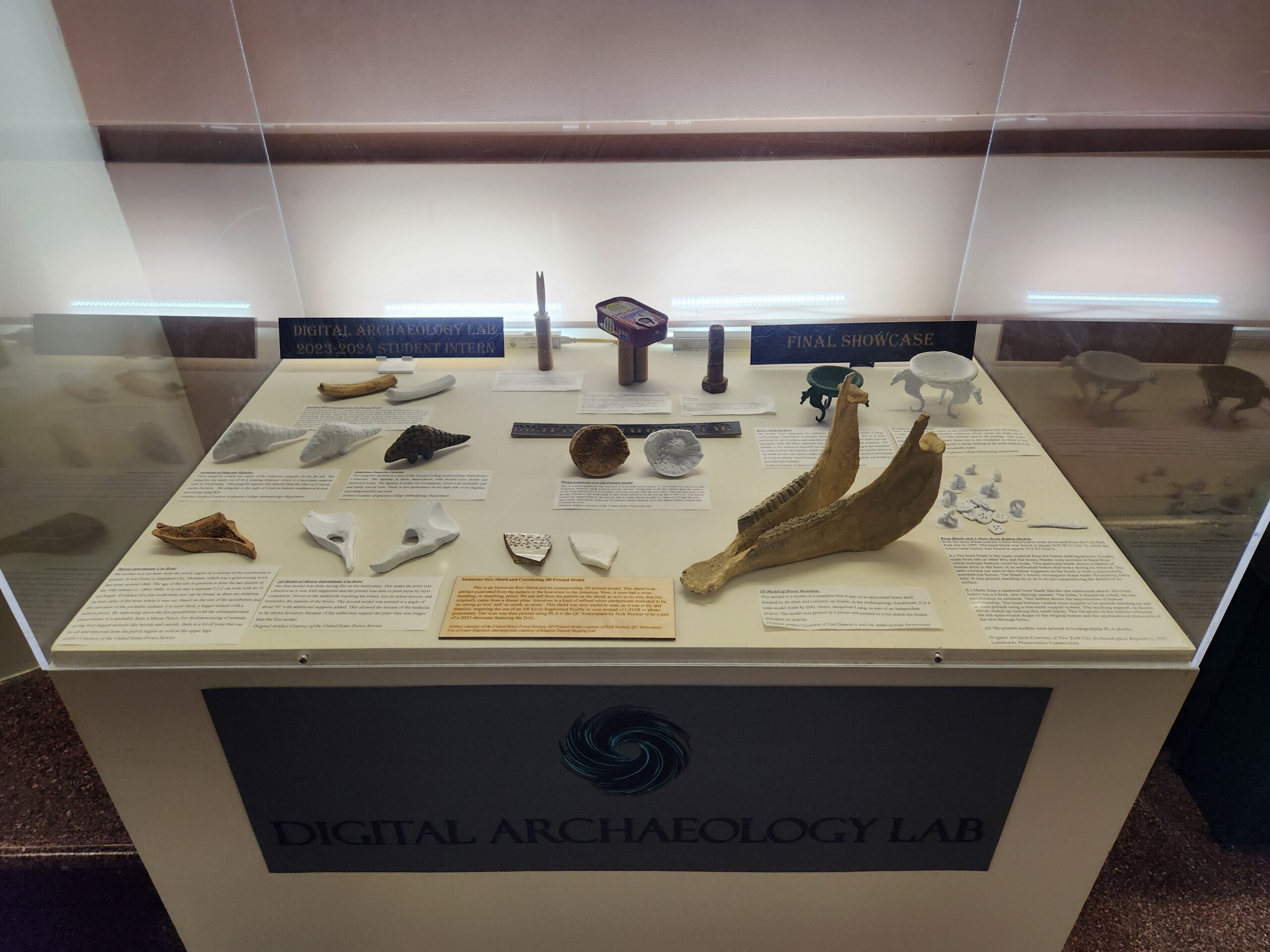
ANTH 103 Introduction to Archaeology
This introductory course introduces the field of archaeology and the ways in which
archaeologists use artifacts and site-based data to reconstruct the details of the human past. As one of the four subfields of anthropology. Archaeology focuses on both daily life, and larger political structures of past cultures to better understand aspects of human society such as religion, political economy, social organization, government, and fundamental components of human behavior. Over the course of the semester, students will learn archaeological theory, methodology, analysis, and interpretation through the use of worldwide case studies that examine early human history, ancient societies, and the early modern period – including the history of archaeology. In combining architectural, burial, textual, commensal, and artistic evidence, archaeologists take a holistic approach to the examination of the human past.
ANTH 243 Archaeology of North America
This course examines the cultures of North America through an archaeological
perspective. It begins with the arrival of the first fully modern humans on the continent itself and continues to the present day, with attention to European colonization, which shaped the history, archaeology, and social landscape of North America. During the semester, we will cover a wide variety of different areas and cultural groups using case studies drawn from both the deep past and historical archaeology. In combining architectural, burial, textual, commensal, and artistic evidence, North American archaeologists take a holistic approach to the examination of the human past of the continent – this course seeks to convey this breadth of data. Additionally, in this course, we will address contemporary issues related to the archaeology of North America and the ways it relates to anthropological archaeology, cultural resource management (CRM), museums, and broader social and ethical discourse.
By the end of the semester, students should have an understanding of the key features that define the archaeology of North America, providing a framework for those wishing to pursue further study in archaeology. Please note that the course will start out with a brief (re)introduction to archaeology before moving into North American archaeology itself. Thereafter, the course will focus on archaeological regions of the continent, discussing data from each and connecting them to American Indian cultural groups.
ANTH 252 Historical Archaeology
This course introduces the subfield of Historical Archaeology and builds on ANTH 103 – Introduction to Archaeology – and ANTH 240 – Essentials of Archaeology – to explore the ways in which archaeologists use artifacts and site-based data, in conjunction with the documentary record and oral history, to reconstruct the details of the human past from 1500 to 1900 AD. In particular, the course addresses the key research themes within the subfield of Historical Archaeology: race, gender, class, ethnic identity, migration & diaspora, trade & exchange, and commensality. Drawing from recent theoretical and methodological developments within the discipline, this course addresses the interpretation of material culture and the ways in which it is used to understand the daily lives of individuals in North America, the Caribbean, Australia, Western Africa, China, and Europe. Historical Archaeology stands as one of the key ways to better understand and communicate the narratives underrepresented communities, such as enslaved Africans, American Indians & First Nations, Australian Aboriginal & Torres Strait Islanders, and diasporic immigrant communities like the Overseas Chinese.
Finally, this course addresses careers in Historical Archaeology as a part of the larger field of anthropological archaeology, including in cultural resource management and museums, and also discusses contemporary issues in social and ethical discourse concerning heritage management. By the end of the semester, students will have a firm understanding of the themes, theories, and methodologies used within Historical Archaeology, which will provide a solid framework for those wishing to pursue further study within the subfield
ANTH 397 Digital Archaeology
This course will work within the Digital Archaeology Lab to learn the basic
current methodologies in digital archaeology, gaining proficiency in the use of LiDar, photogrammetry, and ARKits as they are used in the production of 3-Dimensional models of artifacts and archaeological sites. Students will assist in the digitization of artifacts, including those from the Highland City Archaeological Collection. They will also determine, test, and codify artifact class-based workflows using best practices in digital heritage management. Students will aid the Lab in disseminating knowledge to the associated stakeholder community, as well as the broader academic community through didactics and a showcase.
Student work: Click Here





